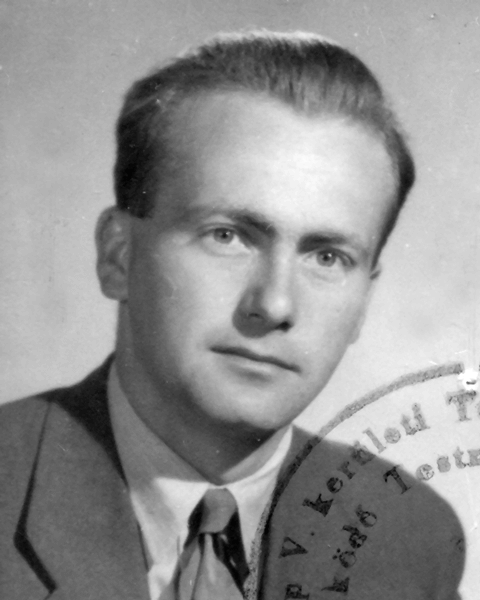Csaba Téglás – Budapest Exit

On October 23, 1956, in Budapest, the largest demonstration occurred in front of the Parliament. In the large square in front of the monumental building there was room for tens of thousands of people. I went there by myself, not with an organized group, to demand with the other demonstrators the appearance of Imre Nagy. We wanted reassurance that he and not the hated and feared Stalinists would lead the coun-try.
While waiting for Nagy to appear, I engaged in conversation with my fellow demonstrators. What an exhilarating experience it was to discuss openly and frankly the country’s problems and future with strangers, without fear of the secret police.
“I hope Nagy will show,” I said.
“There he is,” yelled a young woman, pointing toward the Parliament building where Nagy ap-peared on a platform, accompanied by a number of people. The crowd cheered.
“I wonder whether his entourage consists of his aides, or if they are secret police, to keep him un-der control,” I remarked.
As the applause died down, Nagy started to speak. “Comrades!”
We booed so loudly that it convinced Nagy – or those with him – that the tone of the impromptu speech would have to be changed.
“My friends!”
We were overjoyed. The crowd went wild. After about eight years of communist rule, finally we were addressed properly.
I do not remember anything memorable about the speech, but it seemed that by allowing Nagy to address the demonstrators, the Stalinist leaders accepted him as the future leader of the country.
My jubilation turned into concern when the news spread on the square that fighting had broken out in the eighth district, near my home. While still listening to Imre Nagy, we learned that demonstrators at the radio station requested that their demands be announced over the airwaves. At first the Stalinists sent army troops to disperse the demonstrators. Instead, the soldiers sided with the people. Unable to control either the police or the armed forces, the Stalinists ordered the secret police to use force. Only they were willing to shoot at the unarmed demonstrators.
To me, the armed intervention of the secret police was a signal that the Hungarian Stalinists and the Russians would not give up Hungary. Standing in the square that was named after Lajos Kossúth, leader of the 1848 revolution against the Hapsburgs (a revolution which was defeated by the Russian army), I was concerned that now, just as then, Hungary might again be at the mercy of great powers, without help. On one of the sculptures on the square were carved the words of the poet Sándor Petõfi, who described the nation’s fight in that nineteenth-century revolution:
From the mountain to the lower Danube,
In the storm with painful cries and no friends,
Covered with wounds and cuts in the midst of fight,
All by himself, the Hungarian stands.
* * *
Yes, in 1956, we Hungarians were all alone in our fight for freedom. Since then, not only Hungary, but its neighbors as well attained democratic political systems. In general, the national minorities also enjoy more rights than before, although contrary to democratic ideals, in some of these countries the Hungarian populated areas lost their autonomy that they one time or another enjoyed under communist rule.
We can only hope that in time the three million Hungarians living in the neighboring democracies will also enjoy the freedom and right to self-determination their brethren fought for in 1956.
Excerpted from his book, BUDAPEST EXIT: A Memoir of Fascism, Communism, and Freedom (Texas A&M University Press). The book has received numerous excellent reviews throughout the United States, England, and Hungary. It is available from the publisher, Barnes and Noble, and on www.amazon.com.
Csaba Téglás
Born in 1930, he took part in the Revolution ,then fled Hungary and made his way to Toronto, Canada, and ultimately to the United States. He is a semi-retired city planning consultant. For nearly forty years he has been living in White Plains, near New York City, where locals know him as a champion tennis player. He is married to Rowena, a Scottish lady, who speaks Hungarian. They have two sons, Nicholas and Gordon. He is a member of the Coordinating Committee for the Commemoration of the Hungarian Revolution of 1956.




Paul Maléter – Child of the Five Year Plans